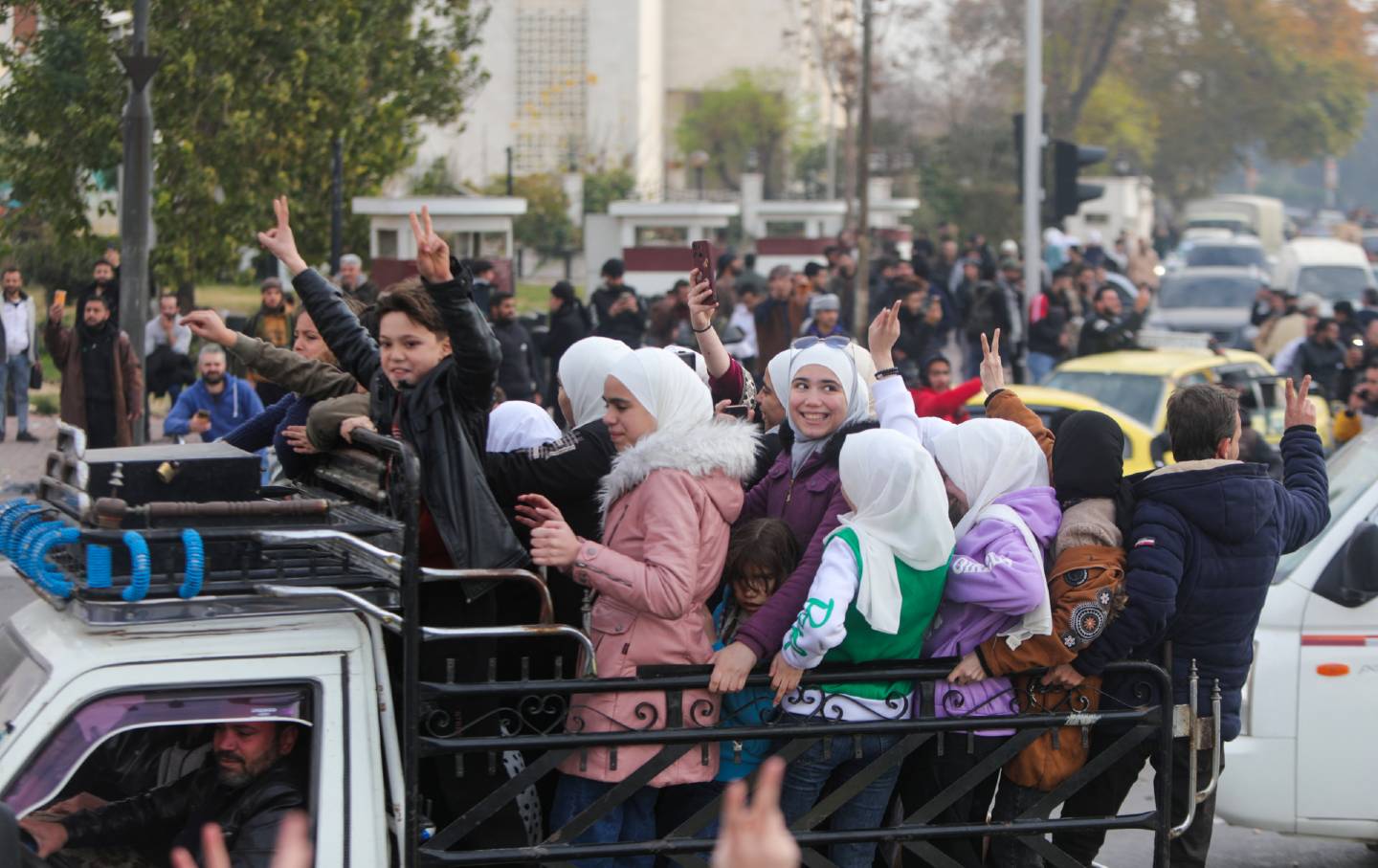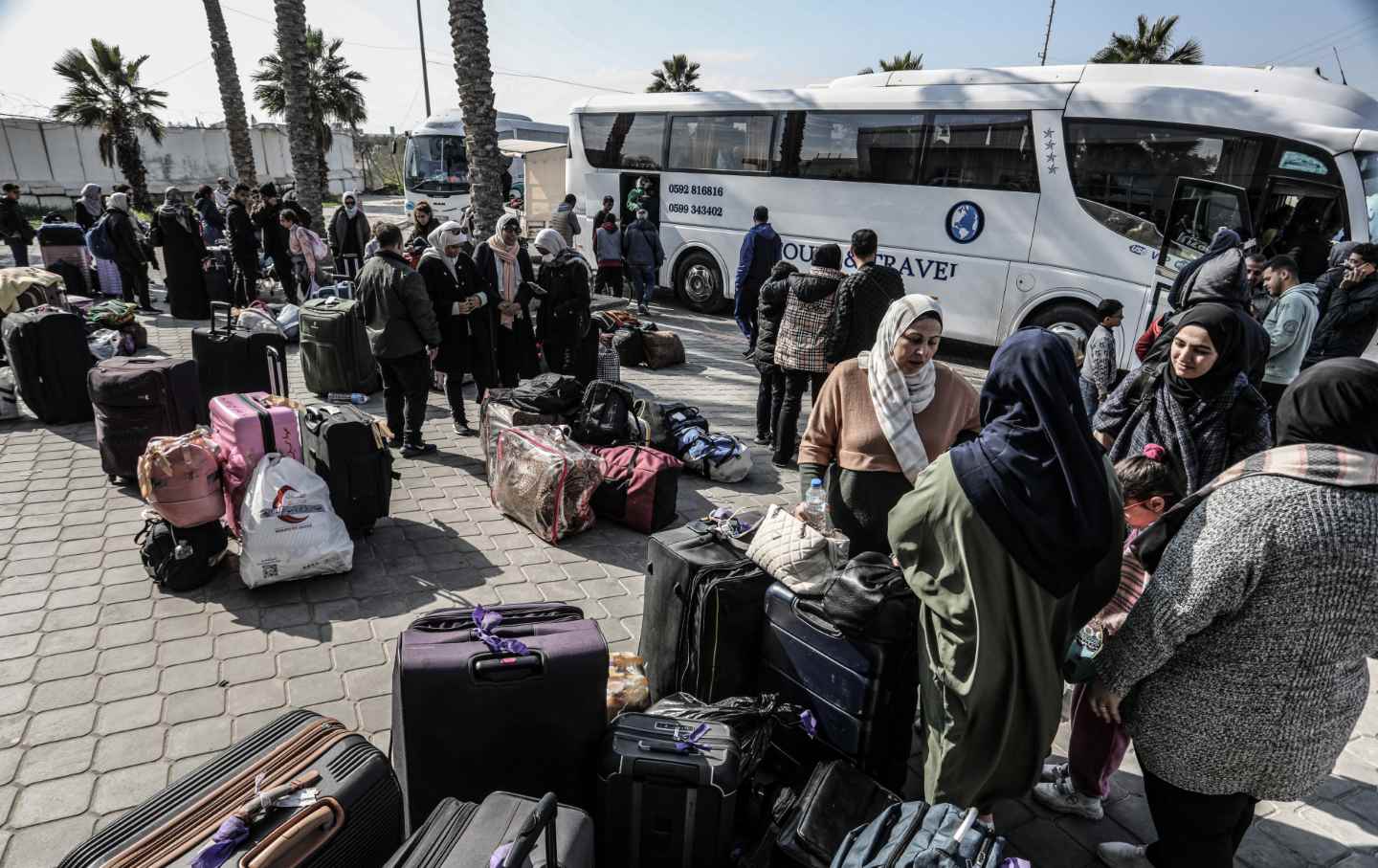The Missing News About Gaza
To understand Palestine and Israel, we need more coverage of the everyday structural violence of occupation.

The violence unfolding across Palestine and Israel over the past four months has been accompanied by a near-real-time deluge of information. Some of this information has been false, and fact-checkers have had their hands full. But beyond the issue of disinformation (trafficking falsehoods),
I worry as a media researcher and a longtime scholar of the Palestinian struggle that decontextualization (selectively presenting truths) is the more ubiquitous and elusive threat to our collective understanding.
Disinformation involves lying by commission. Decontextualization, on the other hand, is about lying by omission. While much has been made of the differential coverage of Palestinian versus Israeli suffering over the past several months, by far the greater asymmetry is to be found when comparing coverage of the weeks of kinetic violence after October 7 with that of the decades of structural violence before. The reason for this asymmetry runs far deeper than political agendas.
News networks cover bombings, shootings, and other forms of kinetic violence because they are loud, finite events that seize our attention. By contrast, the everyday structural violence of Israel’s occupation and apartheid is comparatively uneventful. Instead of loss, it inflicts absence. Instead of killing, it simply aborts. Its first casualties are dreams and destinies. Even its victims cannot offer a full accounting, because how can you miss that of which you were always deprived? Yet the two are inextricably linked. Decades of structural violence give rise to weeks and months of kinetic violence. To cover the latter while neglecting the former is, in a word, to decontextualize: to show audiences the symptoms while depriving them of the underlying causes.
All of the narratives spun by the Israeli government to justify its murderous bombardment of the Gaza Strip draw centrally on the facts of October 7. And while there have been some embellishments that have rightly drawn scrutiny, those core facts are not in dispute, and they are awful enough in their own right as to offer prima facie credibility to Israel’s war narratives.
The deficiency is not so much to be found in the information they present, but rather in the information that is left absent. Using Media Cloud, a database that has tracked news worldwide for around a decade, I found all the news articles published by American, Canadian, or British news outlets during 2023 that mentioned either “Gaza” or the “West Bank,” and generated this chart:

The coverage of both Gaza and the West Bank after October 7 dwarfs everything published in the comparatively stable nine months preceding it. The coverage of Gaza after October 7, meanwhile, consistently exceeds that of the West Bank, where kinetic violence was also happening but at orders of magnitude below its sister territory.
I say “kinetic violence” for the sake of distinguishing it from its complementary concept of structural violence. Whereas bombings or shootings are examples of kinetic violence, structural violence is exemplified by walls, barbed-wire fences, or systems of discriminatory laws. When a bomb goes off, it is a discrete event that can be reported or remarked upon. Structures of violence, by contrast, are continuous features that rend reality in two.
To get a glimpse of what it means for Palestinians to be the victims of structural violence, we can turn to the great Palestinian writer Ghassan Kanafani, who once wrote that “our lives are as a straight line that marches in shame and silence beside the line of our destiny; but the two lie parallel, and shall never meet.” In Kanafani’s telling, the life that Palestinians were meant to live haunts their every footstep. It runs parallel to their actual life, and in full view of their imagination, a daily reminder and humiliation next to which they trudge in silence and shame. As the Palestinian national poet Mahmoud Darwish alternatively phrased it, to live in the shadow of a wall, or on the wrong side of a fence, or on the receiving end of a discriminatory system, is to live “in the presence of absence,” to be haunted by the ghost of one’s potential self—the person you would have become were it not for this wall, this fence, this law, this structure.
This is the agony of the structural violence with which Palestinians were living throughout 2023, and for the long years and decades before that. Blockades and military occupations lead to declines in GDP or employment, which seem boring and statistical and simply lack the visceral horror of a suicide bomb or an airstrike. But behind those percentages are real people whose dreams have been crushed and who may succumb to depression, substance abuse, and death many years before their natural time. But all of that is deemed so indirect, obscured, and probabilistic that it just does not resonate with audiences as strongly.
The asymmetry with which kinetic violence is covered relative to structural violence has implications for how international audiences perceive Palestine-Israel and other civil conflicts. Eventually, after many years of daily indignities and frustration, a breaking point is reached and a rebellion forms. The rebels are much weaker than the state, however, and cannot wield structural violence. Instead, their primary tool is kinetic violence. And because kinetic violence is newsworthy, the first time many outside observers really pay attention to the conflict is when they see masked rebel gunmen killing and terrorizing people. Indeed, if you analyze the coverage of rocket fire and airstrikes over the Gaza Strip in the late 2000s and early 2010s, you will find over and over again that it is usually Palestinian militants who appear to have broken the “calm.” And yet, if you look closer, you will find that nearly every rocket attack was preceded by Israeli provocations—bulldozed orchards and structures, restrictions on freedom of movement, and so on—that blended into the day-to-day humdrum of structural violence.
The kinetic violence of October 7 cannot be understood without the structural violence of October 6 and all the days before. If you recklessly burn fossil fuels for decades, you risk hurricanes and wildfires. And if you indefinitely postpone the political process of relieving structural violence, you risk outbreaks of kinetic violence. For all of these reasons, decontextualization is an enormous challenge to our understanding. To undo it will require more than fact-checking. We will need compassion and patience, and to reflect upon our own biases and blind spots. We will need all of these instruments to see absence.
More from The Nation

Celebrations in Syria May Be Premature Celebrations in Syria May Be Premature
The speed of the Assad dictatorship's collapse stunned even the opposition. But the result is a power vacuum that Israel and Turkey have already moved to occupy.

The Fall of Syria Changes Everything The Fall of Syria Changes Everything
Retired diplomat Chas Freeman and writer Pascal Lottaz discuss what happens now that Damascus is in the hands of Hayat Tahrir al-Sham.

Netanyahu Must Be Brought to Justice. But We Can’t Stop There. Netanyahu Must Be Brought to Justice. But We Can’t Stop There.
This genocide is a massive criminal undertaking, and we must hold as many of its perpetrators accountable as we can.

My Brother, Chef Mahmoud Almadhoun, Died Because He Fed Gaza’s Starving Citizens My Brother, Chef Mahmoud Almadhoun, Died Because He Fed Gaza’s Starving Citizens
His killing by Israel sent a chilling message that no one is safe, including humanitarians who stand in the way of Gaza’s erasure.

The Underground Network Helping Gazan Refugees Survive in Egypt The Underground Network Helping Gazan Refugees Survive in Egypt
A patchwork of volunteer-run mutual aid organizations has sprung up to tackle the severe problems facing people fleeing genocide.

The Dangers of Trump’s Foreign Policy The Dangers of Trump’s Foreign Policy
Strategic incoherence and factionalism reign.


